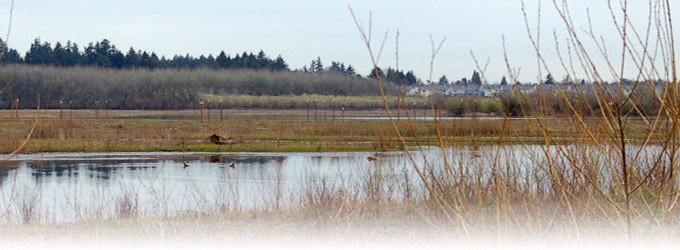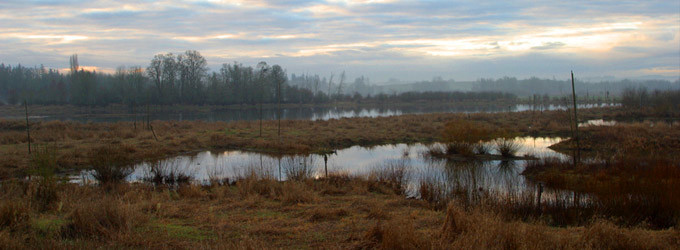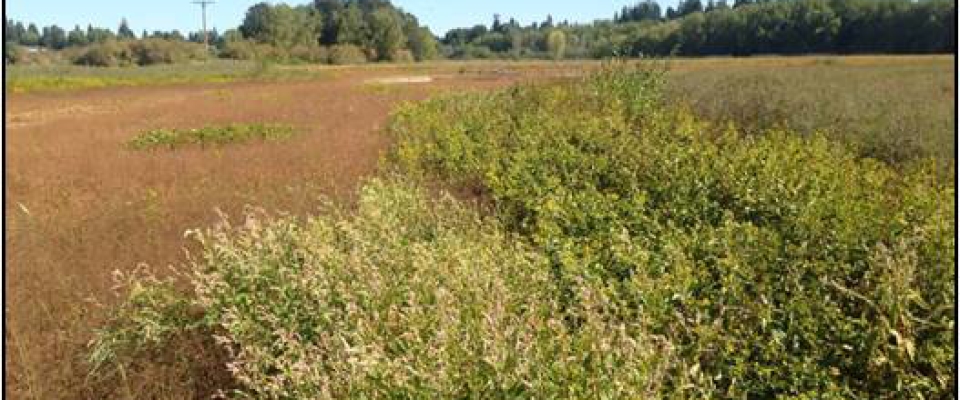What are Wetlands?
Wetlands are areas where the soil is either covered with water, or water is present at or near the surface of the soil all year, or for different periods of time during the year, including the growing season. Wetlands are found on every continent except Antarctica and are some of the most important habitats on the Earth.
How does Jackson Bottom benefit the Tualatin River Watershed?
Jackson Bottom Wetlands Preserve provides many beneficial functions to the Tualatin Basin, including protection and improvement of water quality, water filtration, providing fish and other wildlife habitat, storing floodwaters, biological productivity, a major resting place for migratory waterfowl and important nesting area for neotropical migratory birds. In terms of values it provides to the human population of the Tualatin Basin, it is a wonderful natural area that is open for passive recreation (bird watching, walking, photography, study of botany) and provides a key area for science and environmental education programs for schools in the area.
Restoration and Mitigation Projects
Bobcat Marsh Project

Jackson Bottom partnered with the Port of Portland, ODOT, and Clean Water Services to complete a wetland mitigation project at Bobcat Marsh on the north end of the Preserve. The first phase included excavation of the “elephant mounds” in the wetland, grading for habitat enhancement, road work to improve access and culvert installation for a slough channel through the marsh. In March, 2011, the site was planted with over 30,000 native trees and shrubs. Summer work in 2011 included filling the existing Jackson Slough ditch and rerouting the water into the new slough channel to improve hydrology and establish emergent marsh habitat. With all earthwork associated with this project complete, the remaining efforts will be focus on planting, maintenance and monitoring until 2017.
Wapato Marsh
Jackson Bottom partnered with Ducks Unlimited to restore or create between 55 and 79 acres of wetland habitat in the northeast area of the Preserve. The project established three large wetland units using soil from the “elephant mounds” excavation to build berms. The berms hold water on the site longer in the summer to control the growth of invasive reed canary grass and enhance wildlife habitat. Site preparation included cutting and spraying reed canary grass and disking the rhizomes to discourage regrowth. Funds from a Metro grant have been utilized to manage vegetation on site and expand ash forest wetland and oak savannah areas in the Preserve.











